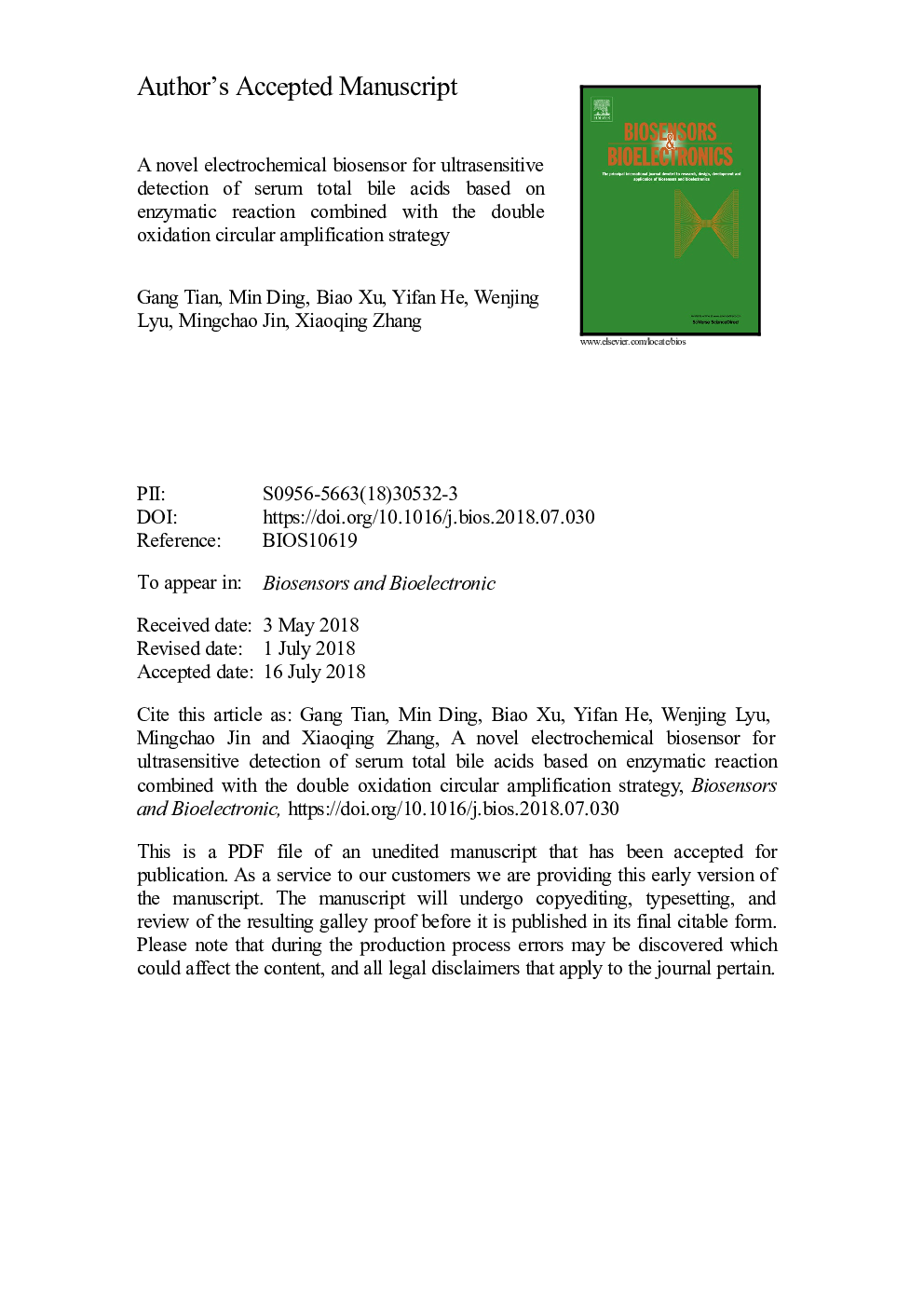| Article ID | Journal | Published Year | Pages | File Type |
|---|---|---|---|---|
| 7228911 | Biosensors and Bioelectronics | 2018 | 17 Pages |
Abstract
Serum total bile acids (TBA) level is used as a sensitive and reliable index for hepatobiliary diseases in clinics. Herein, a novel electrochemical biosensor was fabricated using enzymatic reaction coupling with the double oxidation circular amplification strategy for the detection of human serum TBA. With the catalysis of 3α-hydroxysteroid dehydrogenase (3α-HSD), 3α-bile acids reacted specifically with nicotinamide adenine dinucleotide (NAD+). And then, the reduced nicotinamide adenine dinucleotide (NADH) was produced. After that, the NADH reacted with the electron mediator of tris(2,2'-bipyridine) ruthenium(â
¢) (Ru(bpy)33+), which was then transformed to Ru(bpy)32+. Ultimately, Ru(bpy)32+ was further oxidized to Ru(bpy)33+ under a certain voltage, which was detected by the chronoamperometry assay. The detection was performed using a disposable unmodified screen-printed carbon electrode (SPCE) without sample preparation. The proposed biosensor showed high sensitivity and accuracy with the linear range from 5.0 to 150.0 pmol/L in 106-fold dilution serum. The established method had a good correlation with the enzymatic cycling method (râ¯=â¯0.9372, Pâ¯<â¯0.001, nâ¯=â¯72) commonly used in clinic. The electrochemical biosensor is simple, ultrasensitive and without sample pretreatment, showing great potential for point-of-care testing (POCT) of serum TBA in clinical samples. In addition, the biosensor is cost-effective with a small volume of samples, especially suitable for those who have difficulties in blood collection, such as infants, children and some small animals.
Related Topics
Physical Sciences and Engineering
Chemistry
Analytical Chemistry
Authors
Gang Tian, Min Ding, Biao Xu, Yifan He, Wenjing Lyu, Mingchao Jin, Xiaoqing Zhang,
